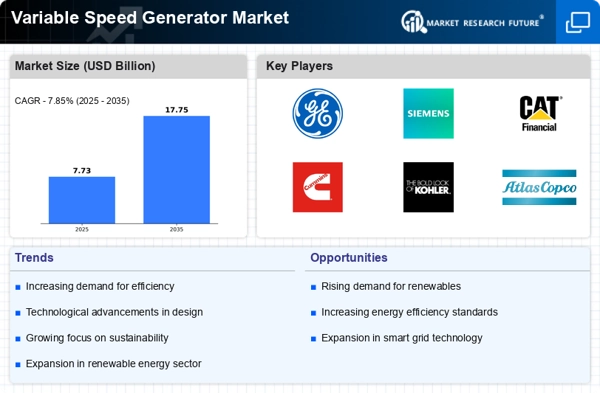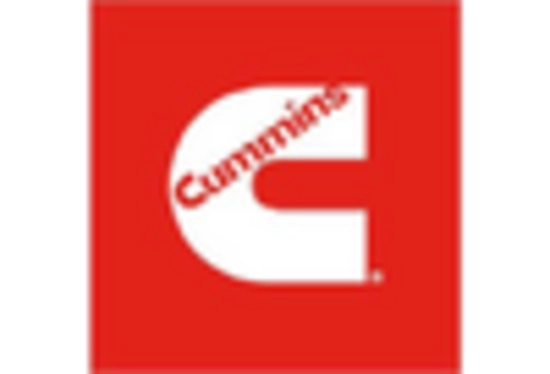Market Trends
Key Emerging Trends in the Variable Speed Generator Market
Green energy projects may be created thanks to government regulations to reduce carbon emissions. More individuals are purchasing these engines to speed up wind mills, which might benefit the market. Variable speed generators may expand as cities grow and consumers desire energy-efficient products. Hydro turbines, wind turbines, internal combustion engines, and combustion engines may power speed generators. The internal combustion engine group dominated the market in 2017. Due to increased shipbuilding, marine, and aircraft spending. However, wind farms are likely to increase rapidly throughout the review. Variable Speed Generator Market has risen significantly in recent years. This is because more consumers seek energy-efficient solutions and more people are adopting green energy sources. One of the biggest industry trends is the growing use of variable-speed generators, which are more versatile and efficient. Variable speeds allow these generators to tailor output to load situations. Adding renewable energy drives variable speed generator market developments. Solar and wind power have grown increasingly popular as sustainability and environmental protection become more essential. varying speed generators are crucial in these scenarios because they can quickly convert varying energy inputs into reliable electrical outputs. Their flexibility makes them ideal for green energy production's uncertainty. Another key variable speed generator trend is their growing application in the water industry. Naval vessels employ variable-speed generators for auxiliary power to power ships and isolated places. Variable speed engines are helping maritime industries save money on fuel, reduce pollution, and improve performance. The variable speed generator market is expanding beyond marine and green energy. Industrial growth is also supporting the market. Variable speed generators help businesses conserve energy and maximize power in various operations. These generators enable you accurately manage the generator's speed, making it simpler to match output to load. Therefore, firms may save energy and money on operations. The market developments suggest that variable speed generator technology has progressed further. These engines' manufacturers are investing in R&D to improve their performance, reliability, and energy efficiency. To address evolving business demands, variable speed generators are created using new materials, digital technology, and enhanced control systems. Government measures that promote energy efficiency and sustainability are also helping variable speed generators. Companies are investing in variable speed generators as part of their green energy strategy due to tax benefits, subsidies, and legislation that make energy-efficient technology simpler to utilize. The top firms are fighting harder as the variable speed generator industry evolves. Businesses rely on product differentiation, strategic collaboration, and expansion to remain ahead of the competition. Competition in the variable speed generator industry spurs innovation and technical advancement. In conclusion, renewable energy, maritime usage, greater adoption in different sectors, technical advancement, and beneficial government initiatives are driving the variable speed generator market. Variable speed generators will help satisfy many places' shifting energy demands as we move toward a greener, more energy-efficient future.

















Leave a Comment